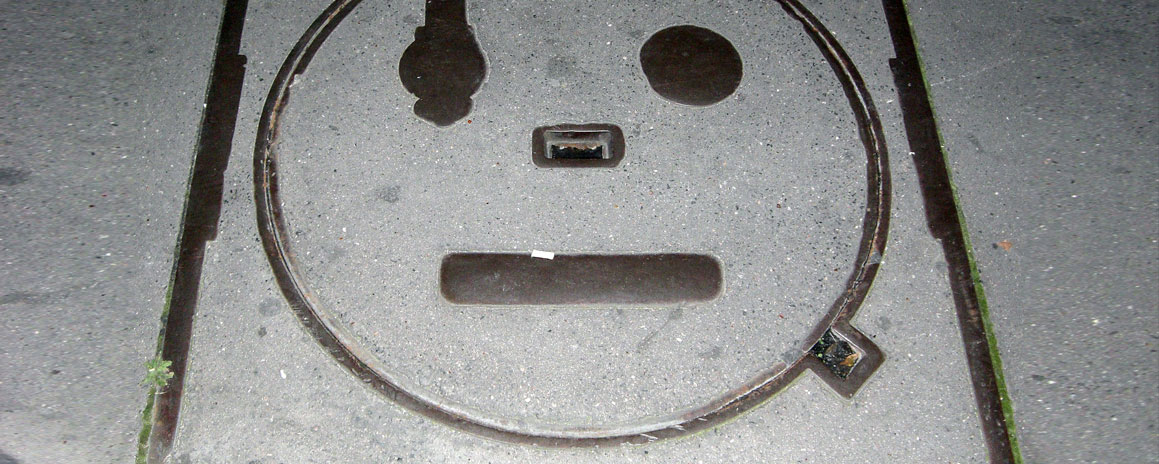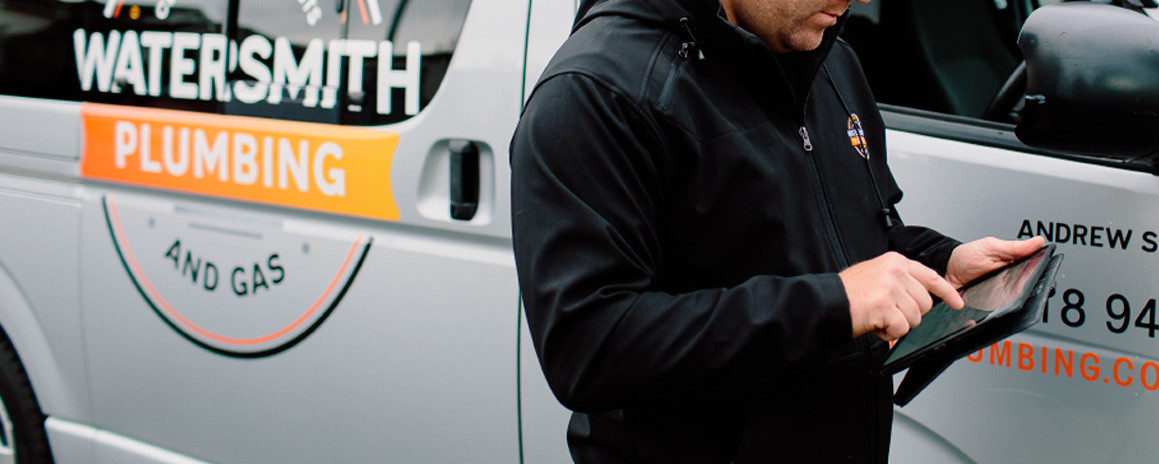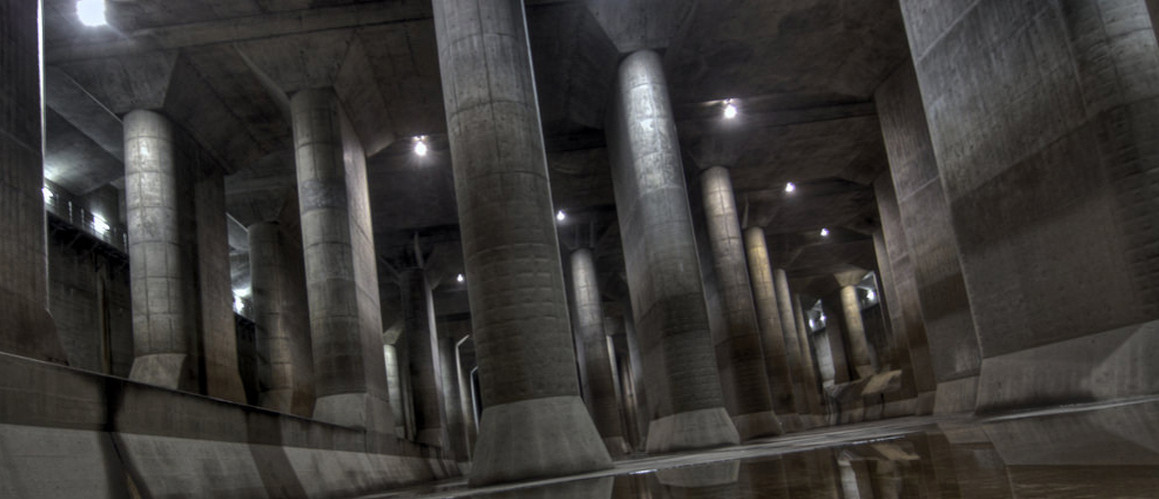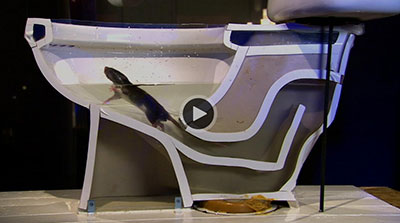Damn Interesting | Watersmith Plumbing and Gas
Just a collection of some damn interesting plumber things / page 4
Other interesting plumber things: « First ‹ Prev 1 2 3 [4] 5 Next › Last »

No, Not The Overlapping Material On The Front Of A Man’s Underwear — Some (Probably Not So) Interesting Facts About Manhole Covers
A manhole is a hole in the ground that gives access to plumbing utilities, like gas, water, sewage and storm water. A manhole cover is the lid used to seal the manhole. They are customarily circular in shape and made from cast iron, although nowadays square and rectangular shapes are common.
Manholes are most typically associated with the opening to a vertical shaft leading down into a sewage drain. The primary purpose of a manhole cover is to protect the manhole from unauthorised access and to prevent accidents from people or objects falling in. Another intention for the manhole cover is to permit air pressure within the sewer system to equalise. For this reason some manhole covers have small openings present to allow air to pass through.
The history of the manhole dates back to as early as 3500BC. Slabs of stone or hunks of wood were used to cover ditches that carried waste. Many civilisations developed this further — the Romans in particular had a complex system of waterworks — however, sewerage system designs that are implemented today were not developed until the 18th Century.
As time progressed, sewer tunnels were used to dispose of waste so as to prevent the spread of contagious diseases. As populations grew there became a need to chain sewer systems together so that the waste could be removed more efficiently. These sewage lines had a hole dug between them in order to connect the two systems together. A cover was then placed over the junction. This junction served as a plumbing point in case the sewer became clogged with debris and backed up.
During the 19th Century the manhole covers started being fabricated from iron and sometimes concrete, plus standardised to round in shape.
Manholes covers have remained largely unchanged since. Something incorporated more recently has been to personalise and decorate manhole covers to give particular cities an extra specialised aesthetic.
Interesting Facts about Manhole Covers:
- One of the main reasons manhole covers are round is so that they won’t accidentally fall into the hole itself. With a round cover, no matter how you hold it, you can’t drop it in.
- A circular manhole shape displaces pressure more effectively, is cheaper to manufacture and can be rolled making it more transportable.
- Nashua, in the US has triangular manhole covers that point in the direction of flow but that design is currently being phased out in favour of round covers.
- Most iron manhole covers have an artistic or aesthetic prints forged into them. Some are smooth, while others have a pattern to assist traction of vehicles passing over them.
- Despite the average cover weighing over 50kg, manhole cover pictures are sometimes collected as works of art.
- The imprint of a manhole cover almost always contains an identifying mark for the company that made it.
- In Rome, manhole covers carry the legend ‘SPQR’, an abbreviation for ‘Senatus Populusque Romanus’, ‘The Senate and People of Rome.’
- The size of a manhole cover can vary but must be a minimum of 560mm in diameter and can be as much as 1.5m.
- Unlike in movies, where a person would fall through a manhole as a joke and survive with minimal injuries, if you were to fall into a manhole unsuspectingly you would be seriously injured or could possibly even be killed from the fall.
- Manhole cover theft is the phenomenon of manhole covers being stolen, usually for resale as scrap. Long considered to be a childish prank or simple vandalism, this type of theft is often expensive to municipalities, and dangerous to their residents.
- There has been a spate of 600 missing drain covers in south Auckland alone over the last five years.
- Large covers are worth around $600 each.
- Storm drains are know to have been stolen as a substitute for the good old ‘Kiwi’ BBQ grill.

Get Ready To Scream!
Long feared and almost universally reviled, since the start of time, rats have been connected with a horde of impressive feats.
Well, did you know one of those neat tricks is they can swim up your sewer pipes and into your toilet?
Rats are actually excellent swimmers. They can tread water for three days straight and can hold their breath underwater for three minutes, according to National Geographic. Also well documented was ‘Razza’, the fugitive rat that swam from Motuhoropapa Island to Otata Island in New Zealand, a mighty swim of over 400m in open sea.
If they can get their head through, they can get everything through! To supplement their fine swimming skills, rats are experts at squeezing through the tightest spaces, attributable to ribs that are hinged at the spine and collapse when squeezed. This explains how rats are able to twist and manoeuvre so gracefully through narrow toilet pipes.
In addition, rats have sharp claws, which means they are able to climb over all sorts of vertical surfaces.
Scary ha, watch and get ready to scream…
But even though rats can make the journey into your toilet bowl with ease, it rarely seems worth it for them and rats in the toilet are not a common plumbing problem in Wellington.
More info: https://video.nationalgeographic.com/video/news/150811-rats-toilet-swimming-vin
Photo Credit: Nuwandalice

Taking Care of Business
Just recently we featured in a nice little article on Fergus written by Katehrin Irvine.
Fergus is smart software for growing trade businesses. All the tools you need. All in one place. Fergus is essentially job management software built to help tradies out on the job site.
Since the beginning, the Watersmith team has been using Fergus for job management, quoting, invoicing and secure online payments. Everything works through the app and it’s now integrated with Plumbing World for materials.
I highly recommend Fergus for small to medium sized businesses ...and the best part…
Andrew’s still spending most of his time on the tools and just a few hours every week taking care of quoting, invoicing, managing Health and Safety and everything else that comes with running your own business
More info:
Fergus website
Fergus app article

Toilet Talk
Toilet humour is often an attempt to replace taboo words related to certain bodily functions with witticisms. Above is a collection of popular sayings, for a full list of toilet slang visit Wiki.

The Largest Drain in the World
Tokyo is one of the most populous metros in the world, with the prefecture exceeding 13 million people! It’s also one of the areas most at-risk from flooding.
So how do you protect the millions of residence from heavy rainfall and tropical flooding? Build a large storm water sewer system under some soccer fields.
The official name of this huge underground water diversion facility is the “Metropolitan Area Outer Underground Discharge Channel” but they are more commonly known as the G-Cans.
Work on the project started in 1992 and took 17 years and three billion dollars to construct. The G-Can has a network of tunnels over six kilometres long designed to channel overflowing flood water from Tokyo rivers into five 65 metre deep, 32 metre wide silos before finally depositing it in a 177 metre deep pillared tank called the “Underground Temple”. The tank connects to several 14,000 horsepower turbines and 78 water pumps, which can pump 200 tons of water per second out of the tank and into the Edogawa River.
The feat of plumbing technology is so impressive that it hosts a very popular guided tour every day! Because the main water tank resembles a temple it has been used in a number of movies – the approach to the Capitol scenes in The Hunger Games Mockingjay Part 2 were filmed in the G-Cans.
More info: https://en.wikipedia.org/wiki/Metropolitan_Area_Outer_Underground_Discharge_Channel
Photo Credit: Stan Chow
